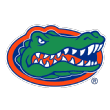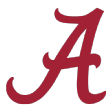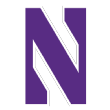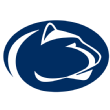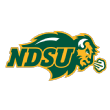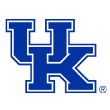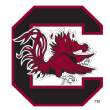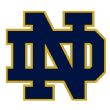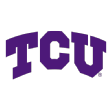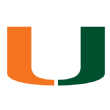2021 NFL Draft Top 100 Big Board: Kyle Pitts, Zach Wilson follow Trevor Lawrence atop list
Dane Brugler 2h ago
We are one month away from the NFL Draft.
There are a few pro days left on the schedule and teams are still parsing the updated medical information for several players. But for the most part, the hay is in the barn and the commissioner is ready for the podium in Cleveland.
We last assessed the Top 100 in January, prior to the Senior Bowl and pro day workouts. Among the biggest risers since then: UCF safety Richie Grant, who went from 89 to 37, and Northwestern cornerback Greg Newsome, who climbed into the top 20 from 65. Alabama quarterback Mac Jones is also ascending, checking in at 23 after sitting at 40 last time.
Let’s examine the updated Top 100 draft board:
1. Trevor Lawrence, QB1, Clemson (6-foot-6, 213 pounds)
The moment the 2020 NFL Draft concluded, Lawrence became the top draft-eligible prospect. Almost a year later, nothing has changed. Lawrence is wire-to-wire the No. 1 player in the class.
2. Kyle Pitts, TE1, Florida (6-foot-6, 240 pounds)
Guards aren’t normally drafted high, but I had no regrets about ranking Quentin Nelson as my No. 1 player in the 2018 draft. Similarly, tight end isn’t generally valued as a position worthy of the top of the draft, but Pitts is the best non-quarterback in this class. Just like Nelson was a unique case, so is Pitts. No need to overthink it.
3. Zach Wilson, QB2, BYU (6-foot-2, 214 pounds)
While Lawrence was the clear top prospect from start to finish, Wilson made a remarkable ascent over the last calendar year with what he put on tape last season. His natural accuracy and instinctive skills off-platform separate him from others in this class.
Zach Wilson
Zach Wilson (Rick Bowmer / Associated Press)
4. Ja’Marr Chase, WR1, LSU (6 feet, 210 pounds)
Chase is extremely talented after the catch and with the ball in the air, exemplifying the “my ball” attitude to consistently win the catch point (he plays like a smaller Larry Fitzgerald). He appears very natural with his route movements but needs to do a better job making every route look the same off the line of scrimmage.
5. Penei Sewell, OT1, Oregon (6-foot-6, 315 pounds)
For a blocker with his size and strength, Sewell is astonishingly efficient with his movement patterns due to his natural flexibility and footwork. Not only does he offer impressive physical traits, but his split-second reads and reflexes are also advanced for a 20-year-old.
6. Jaylen Waddle, WR2, Alabama (5-foot-10, 180 pounds)
With his natural speed and burst, Waddle is dangerous before and after the catch, showing the creativity, competitiveness and separation skills to stress defenses in different ways (he’s responsible for four receptions of 75-plus yards in his career). While still a work in progress with several details of the position, he showed clear maturation with his route construction and ball skills last season.
7. Trey Lance, QB3, North Dakota State (6-foot-4, 224 pounds)
Lance is an unprecedented evaluation. Never before have we seen a quarterback with his talent yet meager experience versus top competition (he has played 17 career games, all against FCS competition). But his preparation habits and natural instincts suggest he is more pro-ready than his lack of experience does.
8. Justin Fields, QB4, Ohio State (6-foot-3, 218 pounds)
Although his methodical process is bothersome, Fields throws a clean, accurate ball and all the physical traits are there for him to lead an NFL offense.
9. DeVonta Smith, WR3, Alabama (6 feet, 170 pounds)
Despite a frail build and average stopwatch speed, Smith is natural in everything he does — finding space, finishing catches and not going down easy (he is tougher and more competitive than most 225-pound wide receivers). The Alabama coaches used him across the formation and routinely highlighted him as having the best hands on the team. He had only seven drops on 268 catchable targets in his career.
10. Patrick Surtain II, CB1, Alabama (6-foot-2, 208 pounds)
With his foot athleticism, body range and ball skills, Surtain plays sticky coverage and doesn’t panic downfield, consistently staying balanced and in phase. While he lacks ideal twitch and doesn’t play as fast as his 4.41-second 40-yard dash, his athleticism is NFL-quality and false steps are infrequent.
11. Rashawn Slater, OT2, Northwestern (6-foot-4, 302 pounds)
Slater doesn’t have ideal height or length, but he is agile, stout and power-packed and doesn’t allow rushers to go through him (it’s the Isaiah Wynn conversation all over again). He is very quick to lock up pass rushers before they can set up their moves and rarely strays from his fundamentals.
12. Micah Parsons, LB1, Penn State (6-foot-3, 246 pounds)
Parsons was tremendous at his pro day, living up to the immense hype with a 4.36-second 40-yard dash and 6.96-second three-cone drill. He needs to improve his maturity, spacing and anticipation in coverage, but the athleticism and budding awareness are there.
13. Alijah Vera-Tucker, OG1, USC (6-foot-5, 308 pounds)
A projected second-round pick over the summer, Vera-Tucker opted back into playing last season and moved to left tackle, performing at a high level for the Trojans. He showed his versatility to play tackle, but his best fit is inside at guard to maximize his strengths as an NFL player.
14. Jaycee Horn, CB2, South Carolina (6-foot-1, 205 pounds)
With his length and athleticism, Horn matches up well versus size and he shows more ownership for the catch point than most wide receivers. He dropped the mic at his pro day with a 4.40-second 40-yard dash, 41.5-inch vertical and 11-foot-1 broad jump, although he elected not to run the short shuttle or three-cone drill.
Jaycee Horn (Frederick Breedon / Getty Images)
15. Jeremiah Owusu-Koramoah, LB2, Notre Dame (6-foot-2, 217 pounds)
With his explosive athleticism, Owusu-Koramoah will be a hot commodity this spring. He has terrific key, read and flow skills, showing the range and physicality to cover the slot receiver one play and rush off the edge the next play. His “fit” will be different from team to team.
16. Azeez Ojulari, edge1, Georgia (6-foot-2, 249 pounds)
Ojulari is very skilled at using his burst and bend to attack the outside shoulder of blockers while greasing the corner and detaching from blocks with his violent hands. He lacks elite size and length for the position, but that shouldn’t limit his ceiling if he continues to diversify his approach and develop his counters.
17. Christian Darrisaw, OT3, Virginia Tech (6-foot-5, 315 pounds)
Keeping his weight over his toes, Darrisaw shows efficient slide quickness in pass protection and is a bulldozer in the run game while unlocking his hips to create movement or seal block. He shows the ability to manhandle defenders once he locks on, but he doesn’t always play with a stout anchor or killer instinct.
18. Greg Newsome, CB3, Northwestern (6 feet, 192 pounds)
A route magnet, Newsome has strong tape and tested off the charts (4.38-second 40-yard dash, 6.90-second three-cone drill), which has earned him a spot in the top 20. He missed at least three games each of his three seasons in college and he needs to stay on the field, but everything else about his game screams high-potential starter.
19. Kwity Paye, edge2, Michigan (6-foot-2, 261 pounds)
Equally effective rushing the passer and stopping the run, Paye competes with athletic twitch and relentless energy to work around blockers and make plays in the backfield. He needs to improve his anticipation and countering skills, but the talent suggests he is a long-term NFL starter.
20. Teven Jenkins, OT4, Oklahoma State (6-foot-7, 320 pounds)
Jenkins ties up rushers early with outstanding body control and works hard to stay attached, finishing with the kill shot and sending defenders into tomorrow once he gets the upper hand. He tends to lean into blocks and defaults to his power over technique, which creates occasional balance problems
21. Landon Dickerson, OG2, Alabama (6-foot-6, 326 pounds)
Dickerson moves with balanced footwork to handle gap penetrators and remove linebackers at the second level. Although he doesn’t always play disciplined, his mauling attitude and finishing skills frustrate opponents. If healthy, Dickerson goes in the first round, but he is a tough projection due to the durability questions, including his torn ACL in December.
22. Christian Barmore, DT1, Alabama (6-foot-4, 310 pounds)
Barmore has been the top-rated defensive tackle since the summer, but it wasn’t until the second half of the season that he started to play like a possible first-rounder. Only a redshirt sophomore, he is still learning, but the traits are enticing, especially in a below-average interior defensive line class.
23. Mac Jones, QB5, Alabama (6-foot-3, 217 pounds)
One of the more difficult evaluations in this class, Jones was surrounded by elite talent at Alabama, which isn’t a reason to dismiss him as a prospect. But it does make it more challenging. Despite his supporting cast, Jones deserves credit for making the reads and throws and staying poised to achieve the success Alabama reached last season with a national championship.
24. Najee Harris, RB1, Alabama (6-foot-2, 230 pounds)
Harris has the quick, graceful feet of a much smaller back to elude pursuit, showing improved decision-making and on-field maturity as a senior in Tuscaloosa. Although he doesn’t have his home run juice, he compares favorably to Matt Forte with his athletic cuts, natural instincts, reliability as a pass catcher and toughness to wear down defenses.
25. Jaelan Phillips, edge3, Miami (Fla.) (6-foot-5, 265 pounds)
Although not super explosive, Phillips is very smooth in his upfield attack and redirect, using his hands and reach as weapons and rushing with his curls on fire. His eyes stay locked on the ball and allow him to see through blockers, which makes him equally productive versus the run and the pass. While a first-round talent, there is some baggage (medical and off-field) that will determine where he is drafted.
26. Jayson Oweh, edge4, Penn State (6-foot-5, 257 pounds)
The “zero sacks” statistic sticks out like a sore thumb, but he was consistently disruptive due to his rare athleticism — a 4.37 40-yard dash, a 39.5-inch vertical, an 11-foot-2 broad jump, a 6.90 three-cone drill. He is very raw instinctually, but his upside is through the roof.
27. Zaven Collins, LB3, Tulsa (6-foot-3, 259 pounds)
With the size of a defensive end and the athleticism of a safety, Collins offers intriguing scheme-versatility and every-down ability. He needs to be better with his take-on skills and run fits, but he flashes like a Dont’a Hightower starter kit.
Zaven Collins (Brett Rojo / USA Today)
28. Kadarius Toney, WR4, Florida (5-foot-11, 195 pounds)
A loose, elastic athlete, Toney routinely makes the first man miss with special start-stop twitch to frustrate would-be tacklers and create explosive plays. While he is an improved route runner, he remains a work in progress with his steps and tempo and his freelancing will backfire at times.
29. Caleb Farley, CB4, Virginia Tech (6-foot-2, 205 pounds)
With only two seasons of experience at cornerback, Farley was always a tough projection, but his size, athleticism and ball instincts are why he was my top cornerback in this class. However, his most recent back procedure shines a bright light on the durability concerns, making it a challenge to understand his draft value. His ranking will remain fluid up until draft day.
30. Levi Onwuzurike, DT2, Washington (6-foot-3, 290 pounds)
Onwuzurike fires off the snap and consistently makes plays away from his gap due to his effort and athleticism. While calling him active doesn’t do him justice, he tends to rush tall and scattered, allowing him to be redirected by blockers.
31. Travis Etienne, RB2, Clemson (5-f0ot-10, 215 pounds)
A speed slasher, Etienne uses his deceiving run strength and deadly start-stop suddenness to forced missed tackles while bursting past defenders or powering through them. He has matured as a pass catcher to be more than simply a screen target, but he must improve in pass protection to stay on the field in any situation.
32. Samuel Cosmi, OT5, Texas (6-foot-6, 314 pounds)
Cosmi is quick out of his stance and does a great job marrying his hands with his eyes to keep rushers in front of him. However, he lacks ideal anchor strength and arm length, which forces him to be consistently on time with his body posture and leverage.
33. Alex Leatherwood, OG3, Alabama (6-foot-5, 313 pounds)
Although he isn’t an explosive mover, Leatherwood is patient and strong in pass protection while relying on his hands to cover up edge speed. He plays like a robot because he is so consistent with his posture and technique, but also because of some stiffness in his lower body, which is why some NFL teams grade him best at guard.
34. Gregory Rousseau, edge5, Miami (Fla.) (6-foot-7, 265 pounds)
Rousseau is a super long athlete who keeps his momentum downhill with violent hands and easy acceleration, which helps him to quickly disengage from blocks. He is an intelligent player and can talk the talk when it comes to breaking down pass rush execution, but he is overly reliant on speed and length and needs to improve his anchor, technique and diagnose skills.
35. Elijah Molden, CB5, Washington (5-foot-10, 188 pounds)
It is fair to question how versatile he is as an outside corner or safety, but he might be the best nickel cornerback in the draft. His instinctive nature versus the pass and the run helps him create plays.
36. Carlos Basham, edge6, Wake Forest (6-foot-4, 274 pounds)
While he can be slowed, Basham is rarely controlled due to his active play style, power and hustle, which directly leads to production. His hands have some pop, but his stiff hips show when trying to bend the corner and he must develop his pass rush sequence.
37. Richie Grant, DS1, UCF (6 feet, 200 pounds)
Grant accounted for 17 turnovers (10 interceptions, seven forced fumbles) over his college career while allowing only three touchdown passes the last two seasons. There are some inconsistent areas to his game, but his range, eyes and ball-hawking skills are why he is my top-ranked safety.
38. Nick Bolton, LB4, Missouri (5-foot-11, 237 pounds)
A hammer in search of a nail, Bolton is a forceful downhill defender with outstanding play speed and striking skills to put ball carriers on the ground before they can reach the line of scrimmage. His lack of size and length will show up, especially in coverage, but his fiery play personality is something that will endear him to NFL coaches.
39. Trevon Moehrig, DS2, TCU (6-foot-1, 202 pounds)
With his body type, range and ball skills, Moehrig is reminiscent of Cincinnati Bengals free safety Jessie Bates. He needs to be more urgent in his stack and shed to be a steady run defender, but his ability versus the pass is why he is a projected top-40 draft pick.
40. Javonte Williams, RB3, North Carolina (5-foot-10, 220 pounds)
Running backs who rely so much on breaking tackles for their production worry me because those tackles will be tougher to break against NFL talent. But Williams is built for the pro game and is still scratching the surface of his dynamic skill set.
41. Terrace Marshall, WR5, LSU (6-foot-3, 203 pounds)
Marshall has the build-up acceleration to eat cushion without breaking stride, and he looks like a basketball big man at the catch point while using his body position and catch radius to reel in off-target throws. Similar in ways to Denver’s Courtland Sutton as a prospect, he tends to rely on his size and speed and needs to hone his urgency and route mechanics for the next level.
Terrace Marshall. (Jay Biggerstaff / USA Today)
42. Rashod Bateman, WR6, Minnesota (6-foot-2, 210 pounds)
Bateman is a natural hands-catcher with length and excellent route savvy who relies on tempo and pacing to create separation. While he is deliberate with his footwork, he lacks explosive burst off the line or out of his breaks and his acceleration falls below NFL standards at the position.
43. Elijah Moore, WR7, Ole Miss (5-foot-9, 185 pounds)
While undersized, Moore is an electric athlete who catches everything. For a team looking for an underneath weapon who can create before and after the catch, Moore will be high on their wish list.
44. Joe Tryon, edge7, Washington (6-foot-4, 263 pounds)
Tryon has been overlooked by many since he opted out of playing last season, but he is a really toolsy pass rusher who has yet to play at his best. He will present excellent value if he makes it to the second round.
45. Asante Samuel Jr., CB6, Florida State (5-foot-10, 180 pounds)
Another cornerback with impressive bloodlines, Samuel doesn’t have ideal size for what teams desire on the outside, but he is a top-tier athlete with instincts. Similar to his father, there is a good chance he exceeds expectations in the NFL.
46. Joseph Ossai, edge8, Texas (6-foot-4, 256 pounds)
Ossai has some body stiffness that is most noticeable at the top of his rush, but he is consistently around the football due to his quickness and pursuit. His locked-in effort and physical presence help mask some of his issues.
47. Jalen Mayfield, OG4, Michigan (6-foot-5, 320 pounds)
A college right tackle, Mayfield doesn’t have elite length, which will move him inside to guard on many draft boards. Regardless if he plays tackle or guard, he is a balanced mover with the power to collapse the line and create holes for the run game.
48. Liam Eichenberg, OT6, Notre Dame (6-foot-5, 301 pounds)
Eichenberg is a fundamentally minded blocker and stays centered in his pass sets, which allows his fierce punch and play demeanor to battle defenders. While he plays under control, his mistakes are usually costly, as he lacks the quickness to easily recover when rush lanes open.
49. Creed Humphrey, OC1, Oklahoma (6-foot-4, 302 pounds)
Humphrey plays with outstanding strength and smarts, which allows him to out-physical his opponent, as his wrestling background and mentality translate to the field. He has average athleticism and doesn’t flash the power to be a people-mover in the run game, but he finds a way to get the job done.
50. Rondale Moore, WR8, Purdue (5-foot-7, 181 pounds)
Not every team is looking for a 5-foot-7 target, but his athleticism is remarkable — both his short-area quickness and long-speed. In the right role, he will be a dangerous weapon in the NFL.
The second half of the board
51. Pat Freiermuth, TE2, Penn State (6-foot-5, 251 pounds)
52. Eric Stokes, CB7, Georgia (6-foot-1, 194 pounds)
53. Jamin Davis, LB5, Kentucky (6-foot-3, 236 pounds)
54. Kelvin Joseph, CB8, Kentucky (6-foot-1, 192 pounds)
55. Tyson Campbell, CB9, Georgia (6-foot-1, 193 pounds)
56. Quinn Meinerz, OC2, Wisconsin-Whitewater (6-foot-3, 320 pounds)
57. Walker Little, OT7, Stanford (6-foot-7, 313 pounds)
58. Ifeatu Melifonwu, CB10, Syracuse (6-foot-3, 205 pounds)
59. Payton Turner, edge9, Houston (6-foot-5, 270 pounds)
60. Amari Rodgers, WR9, Clemson (5-foot-10, 212 pounds)
61. Jevon Holland, DS3, Oregon (6-foot-1, 200 pounds)
62. Aaron Robinson, CB11, UCF (6 feet, 190 pounds)
63. Josh Myers, OC3, Ohio State (6-foot-5, 315 pounds)
64. Dyami Brown, WR10, North Carolina (6-foot-1, 195 pounds)
65. Kenneth Gainwell, RB4, Memphis (5-foot-8, 201 pounds)
66. Wyatt Davis, OG5, Ohio State (6-foot-4, 315 pounds)
67. Marlon Tuipulotu, DT3, USC (6-foot-2, 307 pounds)
68. James Hudson, OT8, Cincinnati (6-foot-4, 302 pounds)
69. Deonte Brown, OG6, Alabama (6-foot-3, 364 pounds)
70. Amon-Ra St. Brown, WR11, USC (6 feet, 197 pounds)
71. Ronnie Perkins, edge10, Oklahoma (6-foot-3, 253 pounds)
72. Milton Williams, DT4, Louisiana Tech (6-foot-3, 284 pounds)
73. Tylan Wallace, WR12, Oklahoma State (5-foot-11, 193 pounds)
74. Dillon Radunz, OT9, North Dakota State (6-foot-6, 301 pounds)
75. Jay Tufele, DT5, USC (6-foot-2, 305 pounds)
76. Brady Christensen, OT10, BYU (6-foot-6, 300 pounds)
77. Daviyon Nixon, DT6, Iowa (6-foot-3, 313 pounds)
78. Jabril Cox, LB6, LSU (6-foot-3, 233 pounds)
79. Paulson Adebo, CB12, Stanford (6-foot-1, 198 pounds)
80. Brevin Jordan, TE3, Miami (Fla.) (6-foot-3, 244 pounds)
81. D’Wayne Eskridge, WR13, Western Michigan (5-foot-9, 188 pounds)
82. Tutu Atwell, WR14, Louisville (5-foot-9, 175 pounds)
83. Dayo Odeyingbo, edge11, Vanderbilt (6-foot-5, 285 pounds)
84. Tommy Tremble, TE4, Notre Dame (6-foot-4, 252 pounds)
85. Alim McNeill, DT7, NC State (6-foot-2, 318 pounds)
86. D’Ante Smith, OT11, East Carolina (6-foot-5, 294 pounds)
87. Kendrick Green, OC4, Illinois (6-foot-2, 305 pounds)
88. Rashad Weaver, edge12, Pittsburgh (6-foot-4, 259 pounds)
89. Stone Forsythe, OT12, Florida (6-foot-7, 330 pounds)
90. Jackson Carman, OG7, Clemson (6-foot-5, 317 pounds)
91. Baron Browning, LB7, Ohio State (6-foot-3, 241 pounds)
92. Nico Collins, WR15, Michigan (6-foot-4, 215 pounds)
93. Trey Smith, OG8, Tennessee (6-foot-6, 331 pounds)
94. Hamsah Nasirildeen, DS4, Florida State (6-foot-3, 215 pounds)
95. Chazz Surratt, LB8, North Carolina (6-foot-2, 227 pounds)
96. Robert Rochell, CB13, Central Arkansas (6 feet, 193 pounds)
97. Andre Cisco, DS5, Syracuse (6-foot-1, 216 pounds)
98. Davis Mills, QB6, Stanford (6-foot-4, 217 pounds)
99. Aaron Banks, OG9, Notre Dame (6-foot-5, 338 pounds)
100. Jamar Johnson, DS6, Indiana (6-foot-1, 200 pounds)




